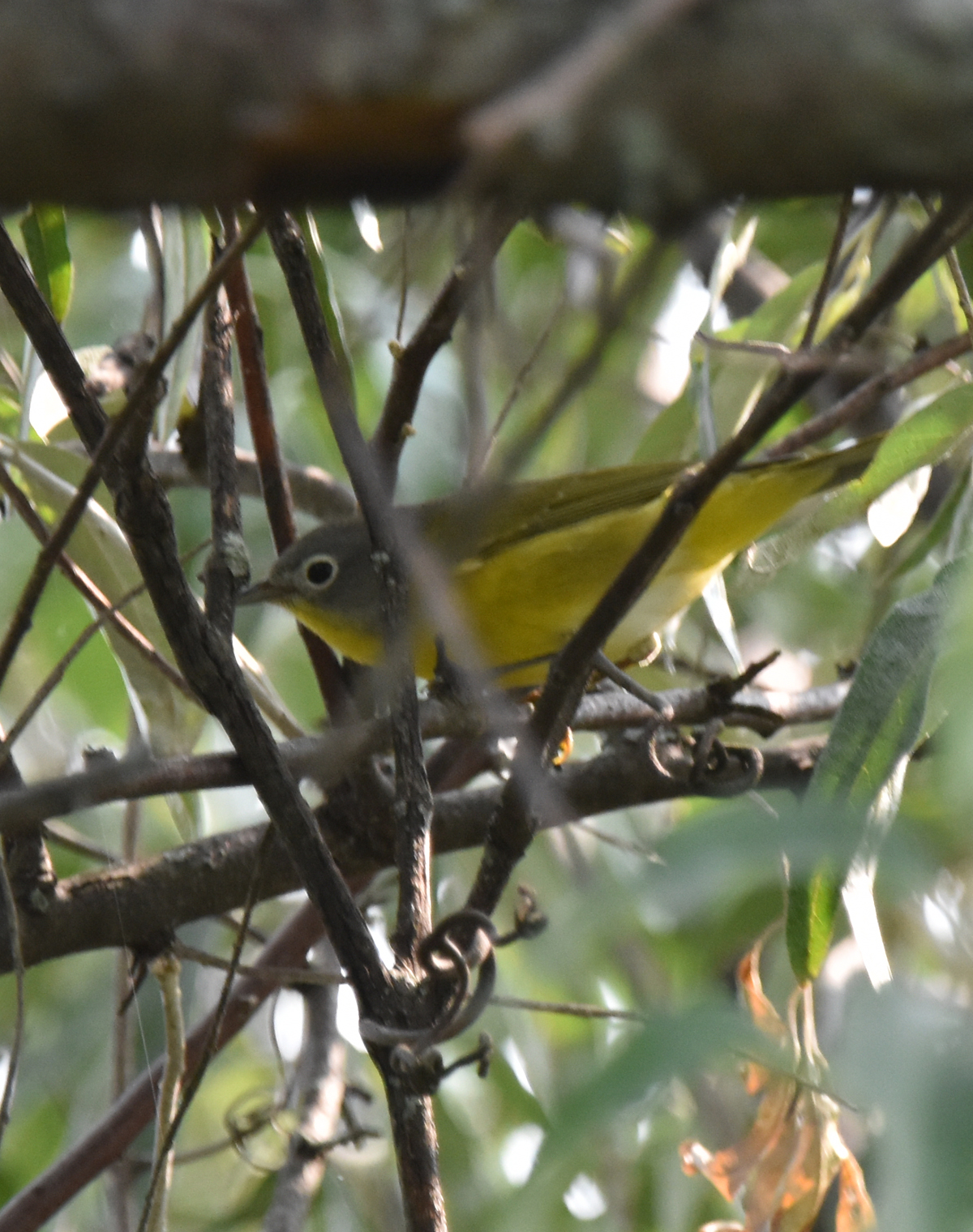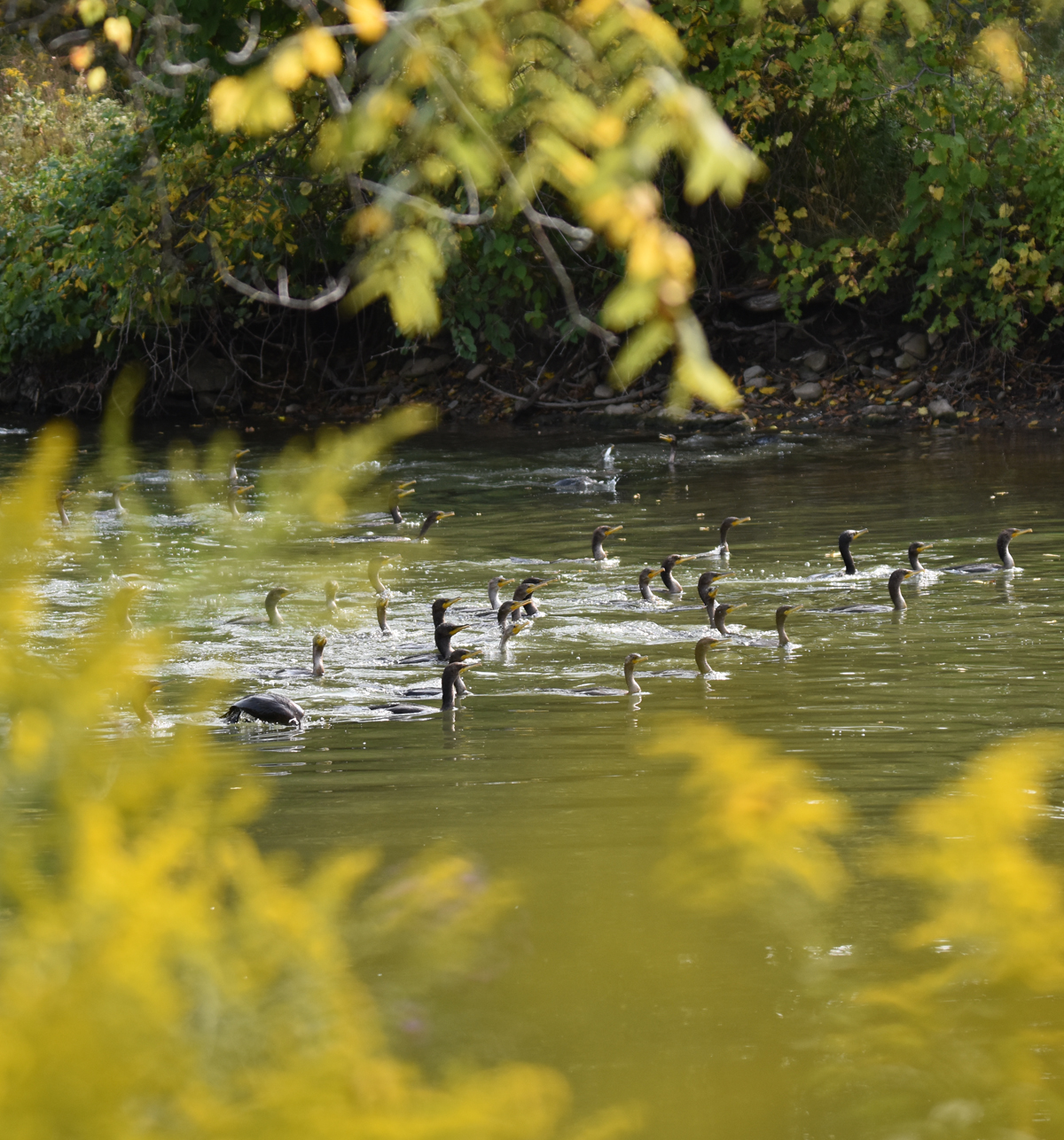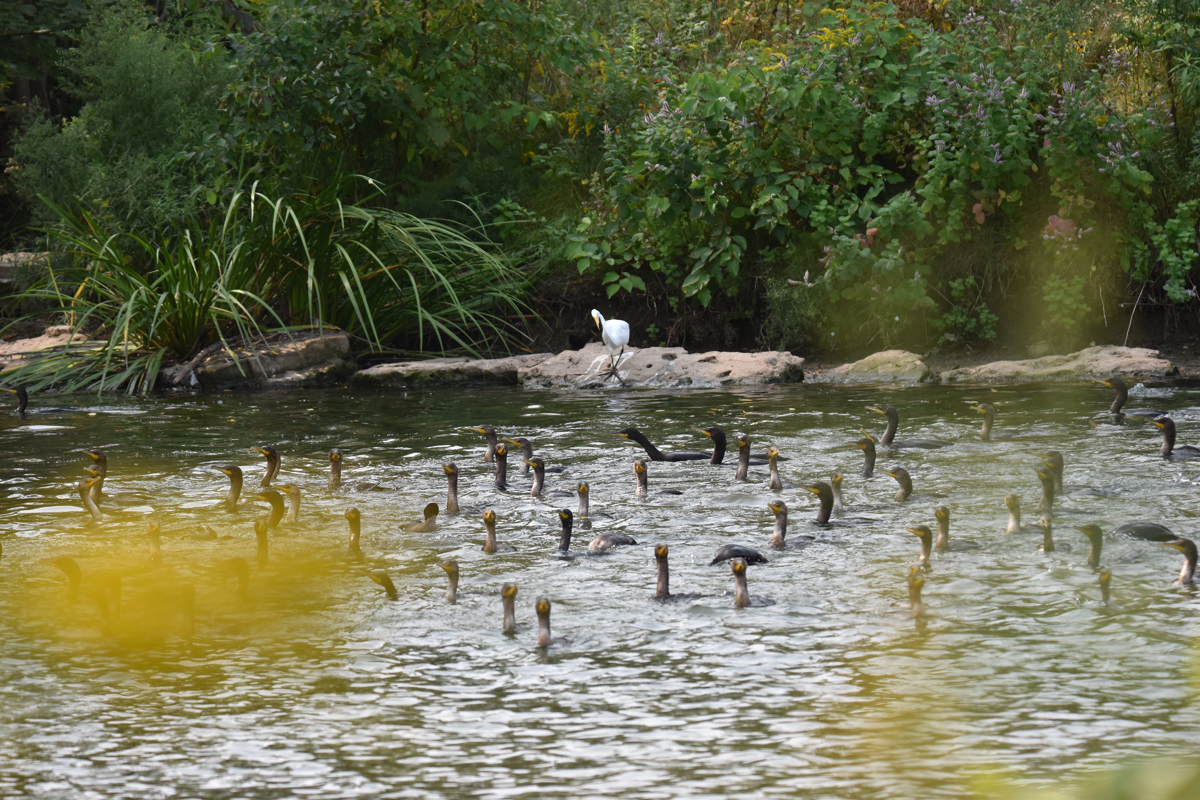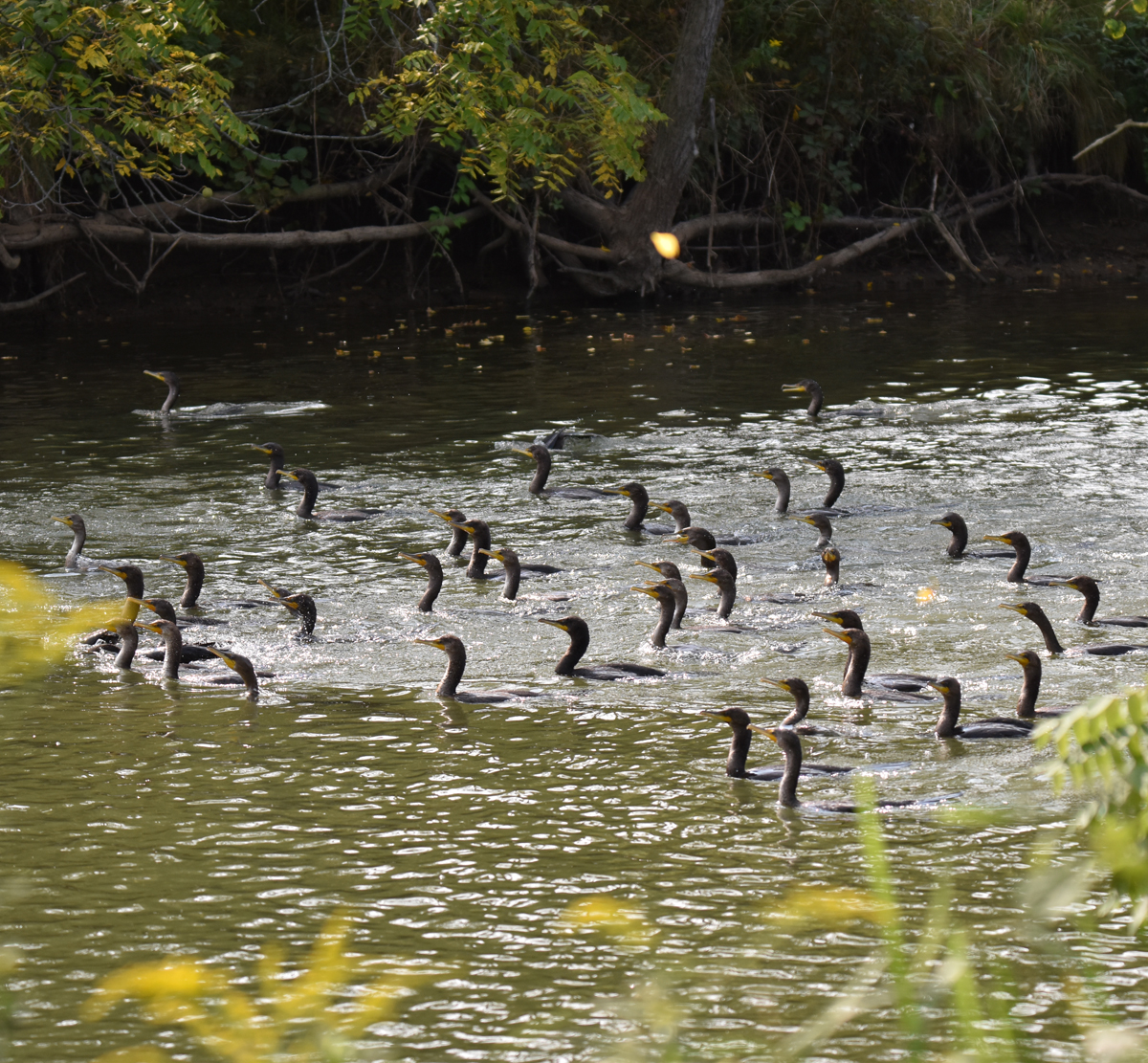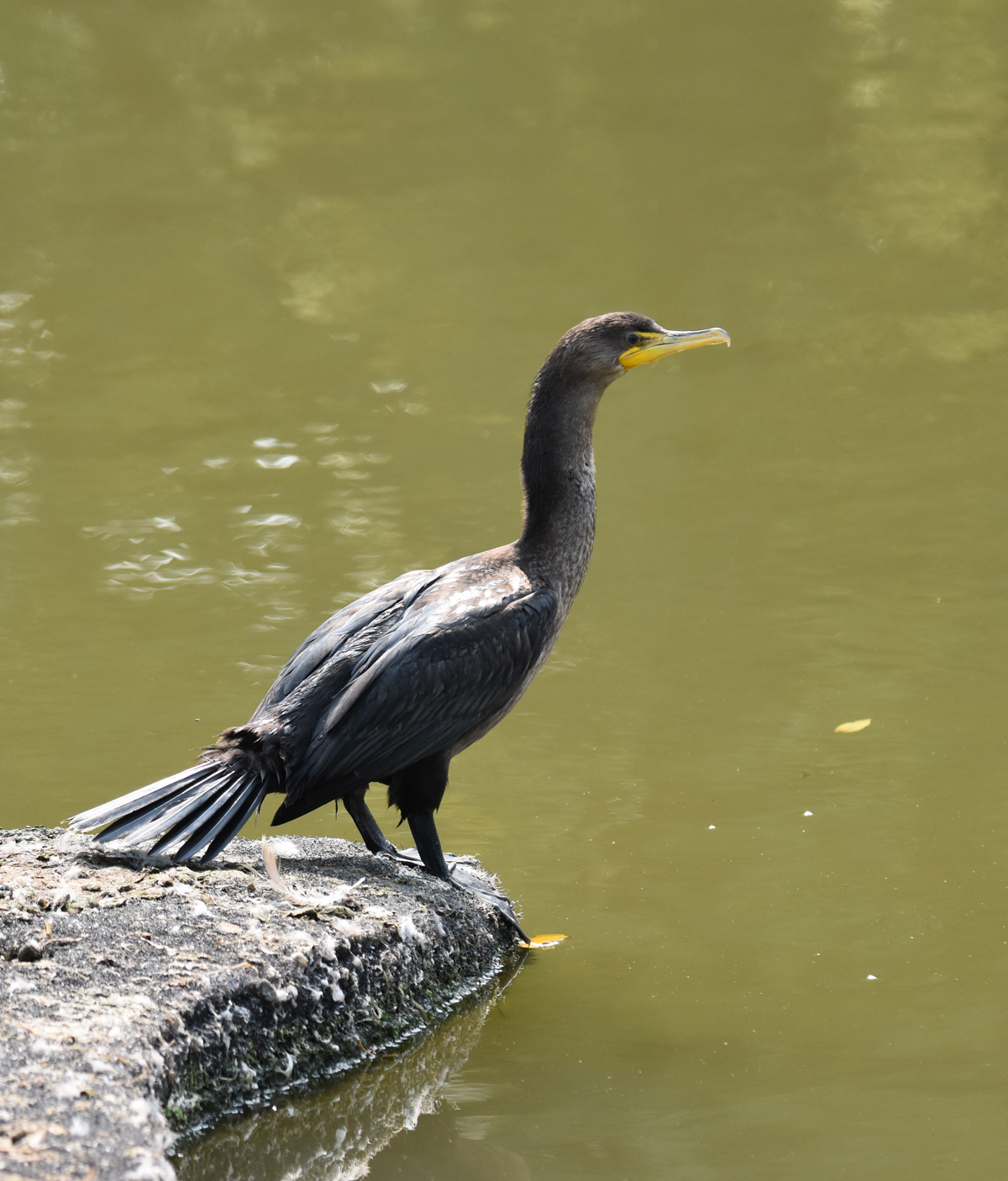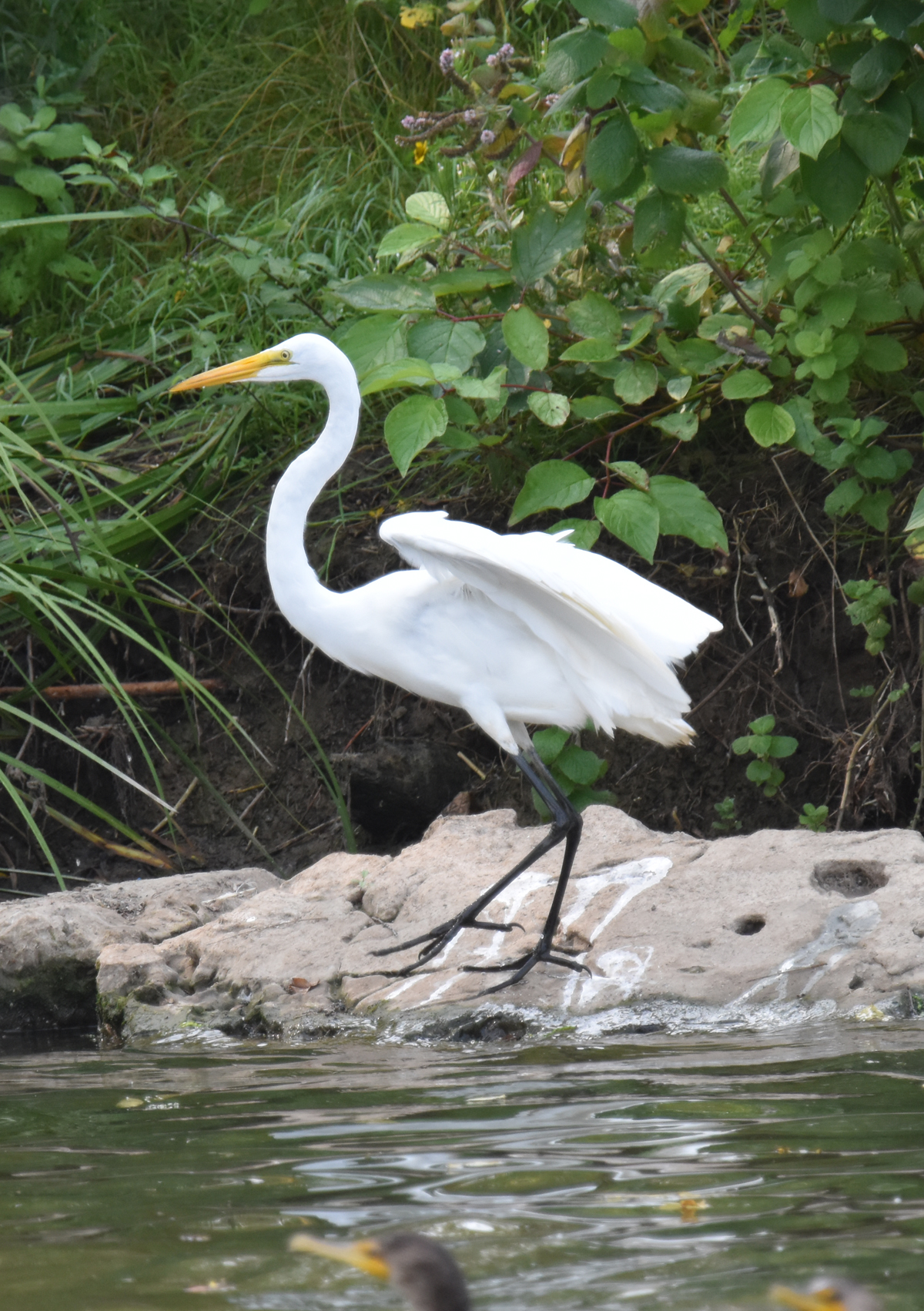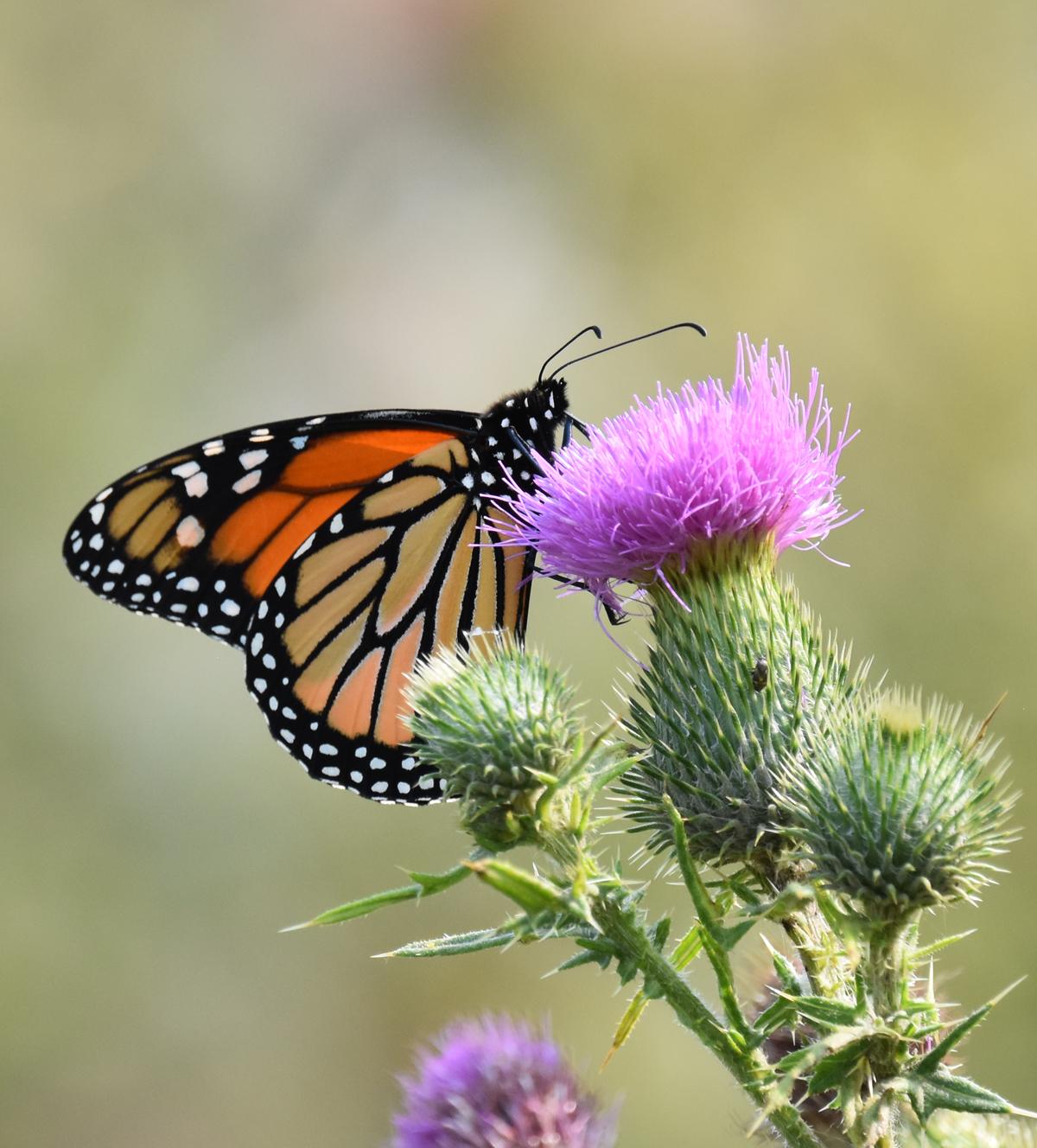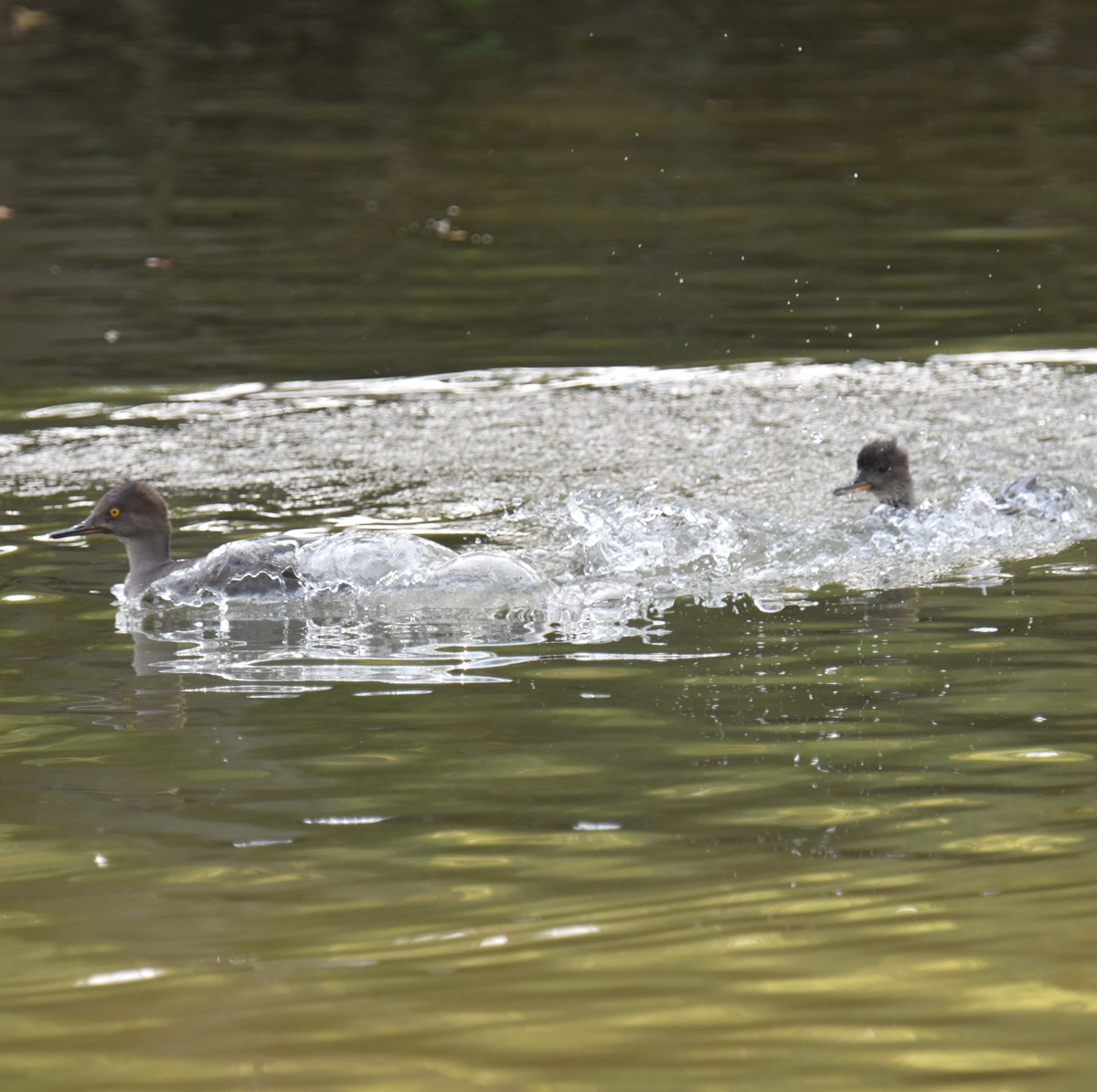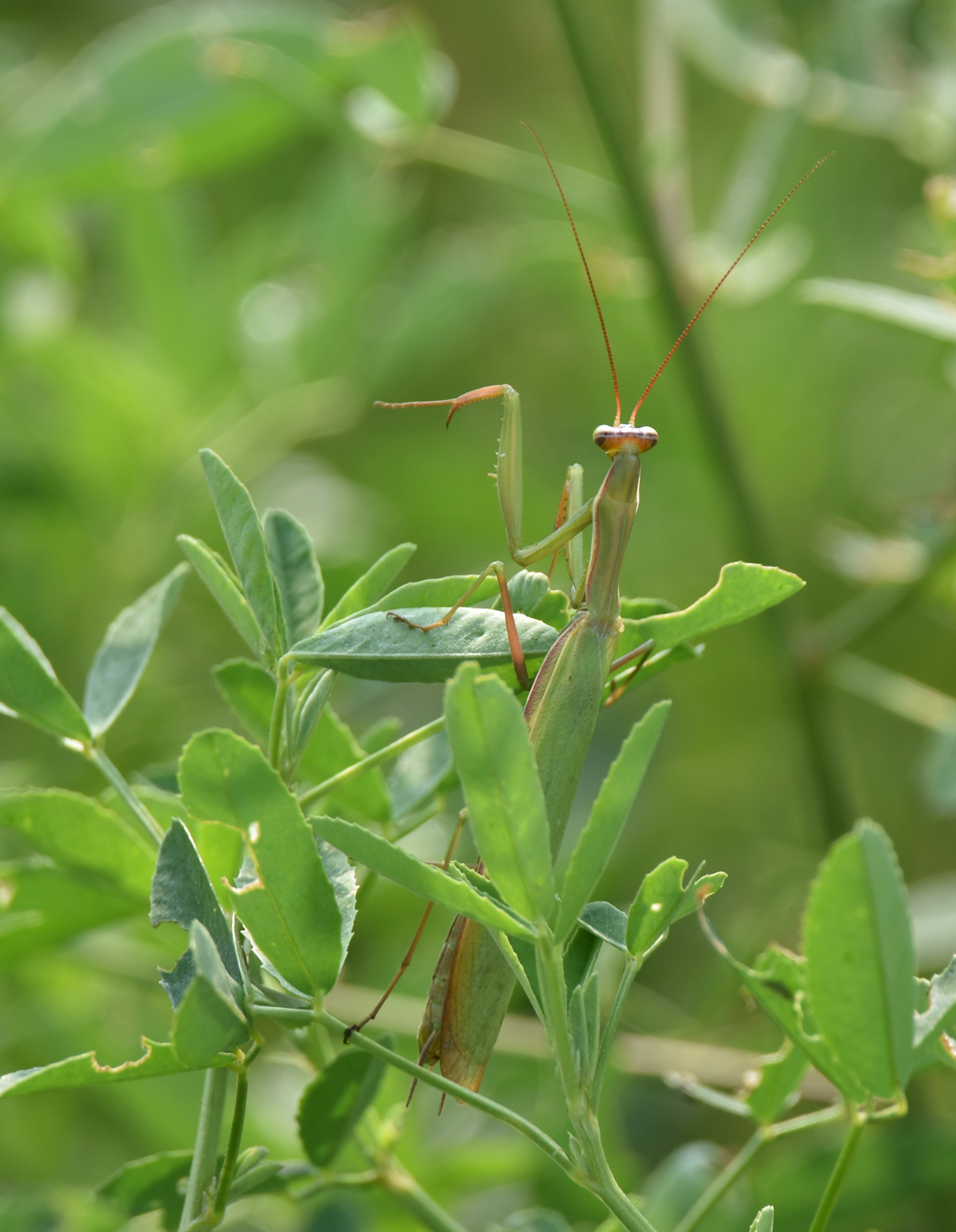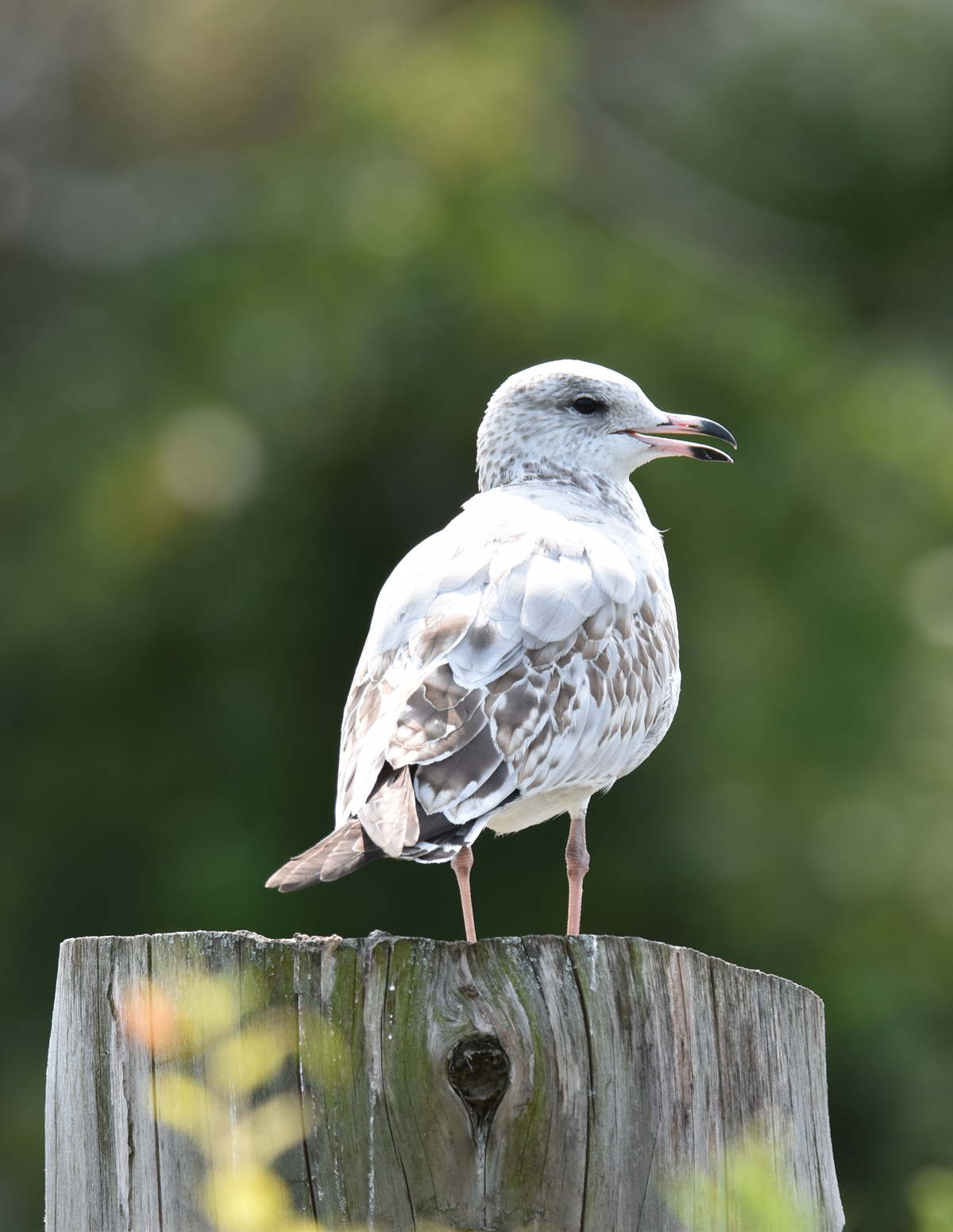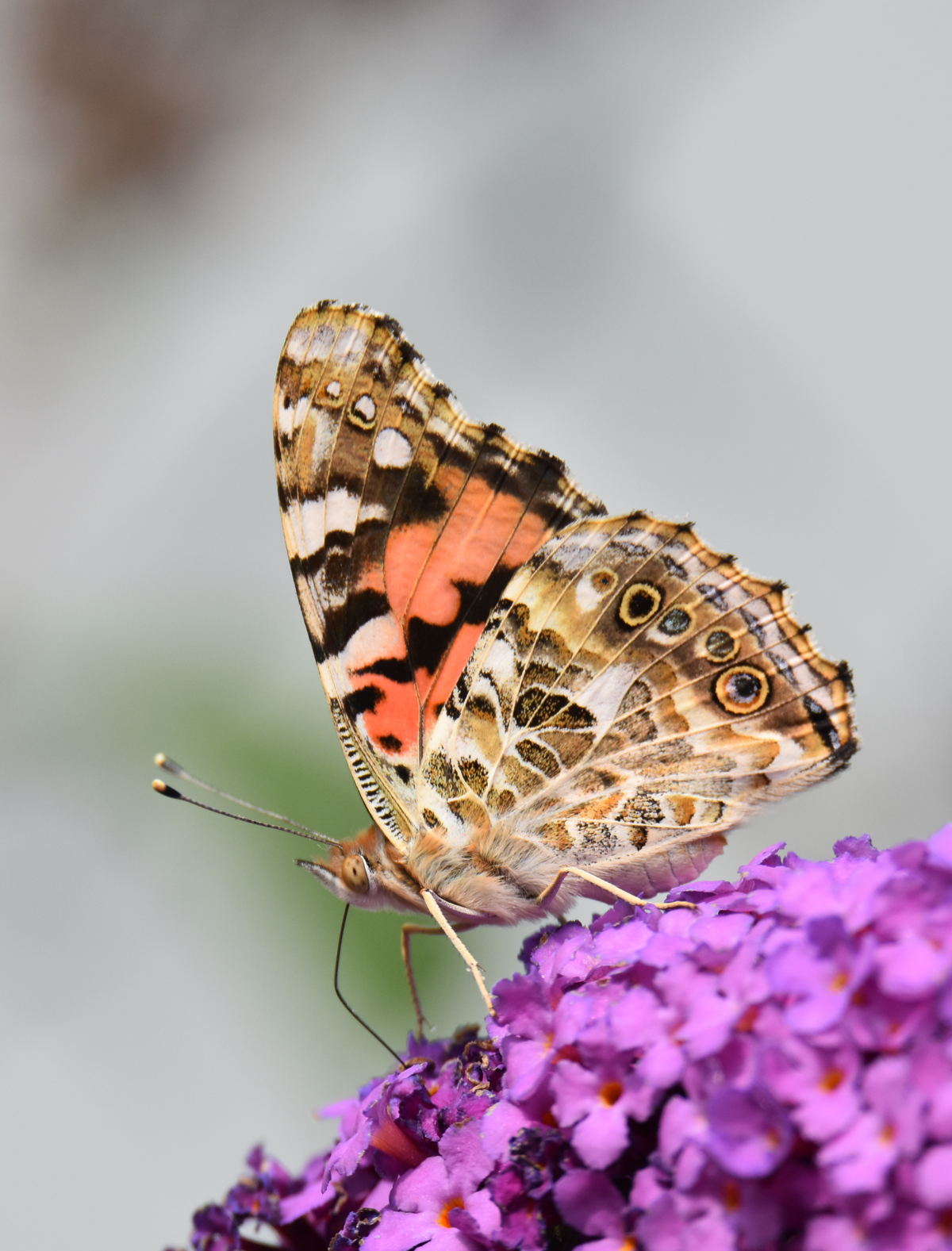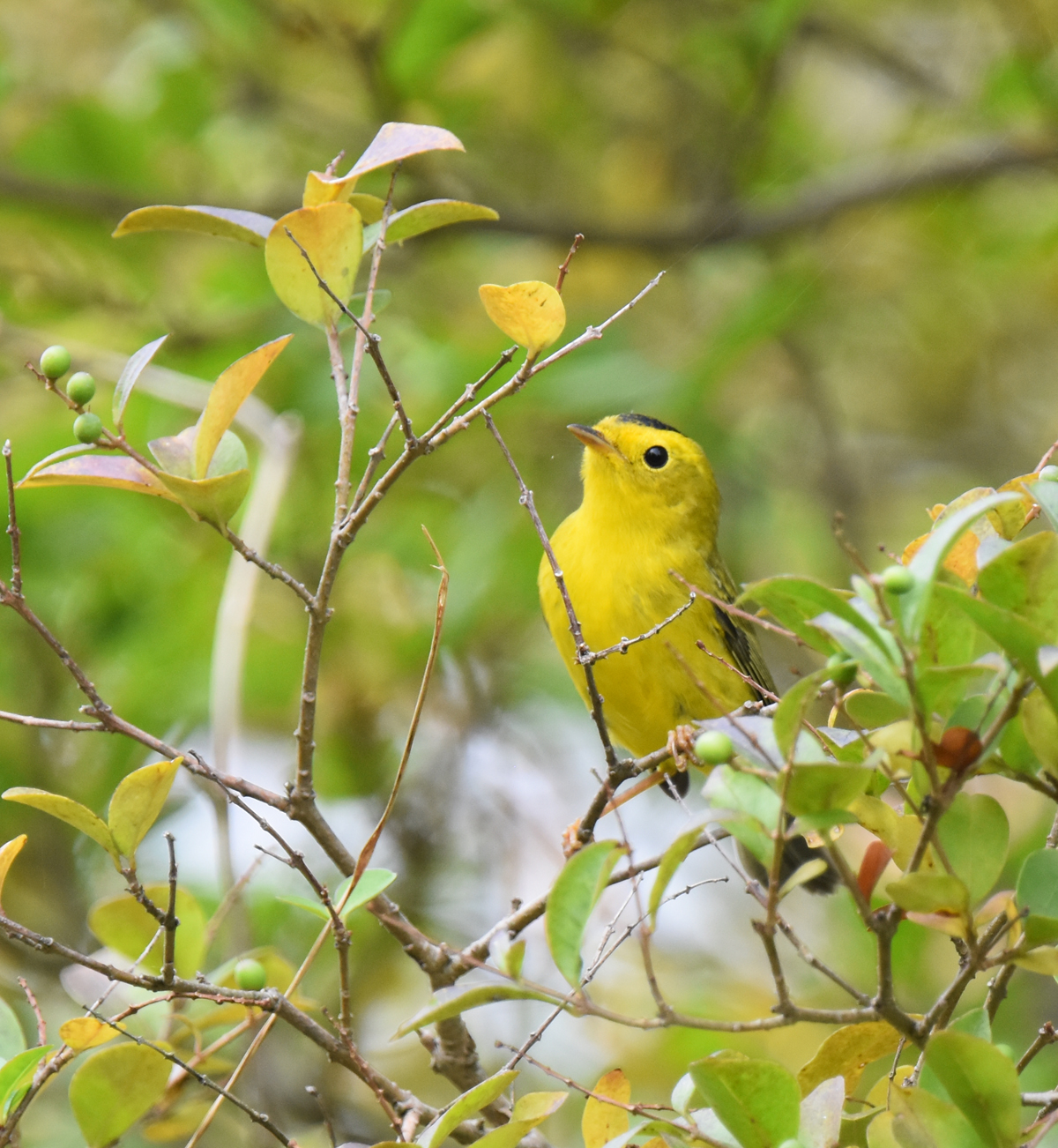In Dundas, Ontario, there is an old unused canal called the Desjardins Canal which ends at the beginning of the Urquhart Butterfly Garden. I explored the Garden a few times in 2017 while in town for other reasons, including visiting nearby McMaster University. The butterflies and flowers were worth seeing and as an added bonus I discovered that the almost stagnant nearby Desjardins Canal is well-used by birds and wildlife. On one visit, I watched some intriguing behaviour by a large dive of Double-crested Cormorants.
Where There Are Butterflies There Should Be Birds
On my mid-September visit to Urquhart Gardens, Monarchs and Painted Lady butterflies were migrating and so were several warblers. This Wilson’s Warbler spent most of its time hidden by twigs and branches but luckily popped out long enough for me to see it well.
This Palm Warbler was less co-operative for a photo but let me see itself clearly enough to identify it.
And this Nashville Warbler was also more interested in finding food than in photographers.
Double-crested Cormorants Launch a Food Drive in the Dundas Desjardins Canal
While at Urquhart, I ambled along the path beside the end of the Desjardin Canal. I had seen a Green Heron here on another visit and wondered if it was still around.
I stopped to inspect some Goldenrod in full blaze, when my peripheral vision noticed something swimming towards me.
It was a very large group of Double-crested Cormorants. Some were diving but most were simply swimming forward in rows that stretched from bank to bank. They were quickly approaching the squared off end of the canal. As they got closer, more and more birds started diving.
They stayed, still hunting, near the end of the canal for a few minutes, then turned en masse and started down the canal again.
I wondered as I watched whether they had been deliberately or only accidentally driving all of the fish up the canal to where the only escape for a scared sunfish would be back past all the birds. Did they intentionally herd the fish this way? If so, had they done this many times before?
For several dozen metres, the group stayed together on the way back down the canal. Eventually, though the birds dispersed.
Many of them climbed out to dry off. Frankly, I don’t find Cormorants appealing to look at.
I did find a reference to these birds driving “fish to heads of narrow bays” so it is possible that this was a deliberate act.
Other Denizens of the Desjardins Canal Area
This Great Egret, who also benefited from the fish drive, is more appealing to my eye.
I did see some butterflies, too, including this Monarch.
Some Hooded Mergansers were also in the Canal. This one in the back gave the front one quite a chase.
Butterflies weren’t the only insects in flight. I watched this Mantis fly across the path and land in a shrub.
There were several Gulls around. I’m saving Gull-identification for retirement, so I won’t check what kind this is, though I suspect it’s a Herring or Ring-billed juvenile.
This Painted Lady enjoyed the Butterfly bush flowers along the fence line. I try to get a look at the underside of the wings like this because if there are 5 “eye” spots, it’s a Painted Lady, and if there are only 2 it’s an American Lady.
Eventually I finished my ramble around the Canal and Garden. The last bird I met was one of the first I had encountered. The Wilson’s Warbler had only moved a few dozen metres from near the parking lot to the middle of the Butterfly Garden. He popped out briefly as if to say “Tally Ho!” then disappeared into the twigs and branches again.
I hope I’ll see him sometime next spring; Though I won’t be able to recognize him, perhaps he will recognize me!
Related Reading
- An American Snout at the Rattray
- A Common Buckeye at the Rattray
- A Milbert’s Tortoiseshell at Hendrie Valley
Join In
Did you ever watch a group of birds working towards a common goal? Did you think it was a planned decision or just a happy coincidence? Please share your experience with a comment.



